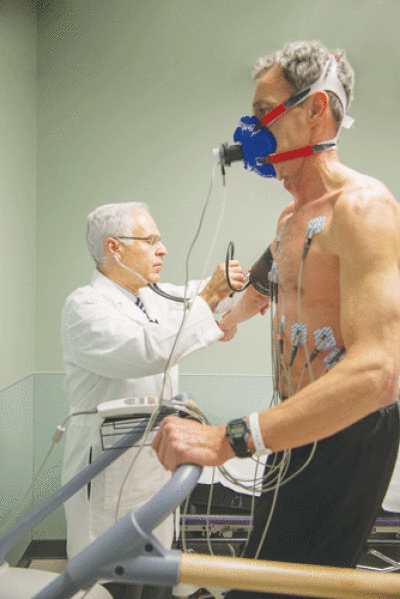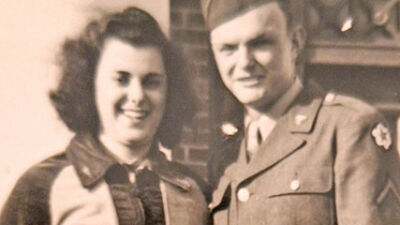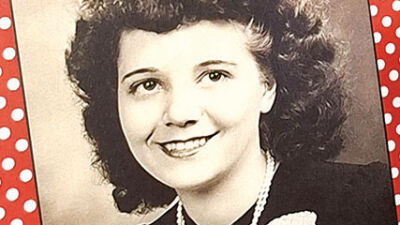
Dr. Barry Franklin, director of preventive cardiology and cardiac rehabilitation for Corewell Health East, the new name for Beaumont Health, works with a patient in the Cardiovascular Performance Clinic at the Beaumont Health & Wellness Center on Coolidge Highway in Royal Oak. Franklin has done extensive studies on snow shoveling’s effect on cardiovascular function, using similar equipment on people while they shovel.
Photo provided by Corewell Health East
METRO DETROIT — With the snowstorms or even the moderate snowfalls that we often get in Michigan comes a risk of death or severe injuries by shoveling snow.
According to the American Heart Association, while most people won’t have a problem, shoveling snow can put some at risk of heart attacks or other injuries. Moving heavy snow can put a big strain on the heart, and pushing a snowblower can also result in injury.
According to the National Safety Council, a nonprofit based in Illinois, cold weather can increase heart rate and blood pressure while also constricting arteries and making blood clot more easily. People older than 40 or those who are generally inactive are especially at risk.
The National Safety Council offers the following tips on shoveling:
• Do not shovel after eating or while smoking.
• Take it slow and stretch out before you begin.
• Shovel only fresh, powdery snow; it’s lighter.
• Push the snow rather than lift it.
• If you do lift it, use a small shovel or only partially fill the shovel.
• Lift with your legs, not your back.
• Do not work to the point of exhaustion.
• Know the signs of a heart attack. Stop immediately and call 911 if experiencing any symptoms, as every minute counts.
The National Safety Council also states that people who have histories of heart disease should not shovel unless they have their doctor’s permission.
Another option would be to hire a snow removal company to do the work.
Jeff Rosenberg, doctor of chiropractic and owner of The Joint Chiropractic in Troy Marketplace, 788 E. Big Beaver Road, said shoveling snow, albeit necessary in Michigan winters, can pose some real dangers. There are both musculoskeletal and cardiovascular risks associated with snow removal.
“Ideally, you can hire a professional crew to assist, but if you must shovel yourself, here are a few helpful tips. Do a brief warmup of your muscles inside. Even just a series of alternating standing bent leg raises can prepare your muscles and heart for the task at hand. The most ideal time to shovel is shortly after snowfall. This is when the snow is its softest and lightest. If you wait until the snow hardens, the risks for injury grow appreciably,” he said in an email interview.
He said that, when shoveling, make sure to alternate sides from left to right to avoid overuse of one side. Keep the knees bent to avoid injury to the back, and keep the shovel closer to your body to avoid an extended reach.
“If you begin to feel that you are out of breath or a muscular strain, make sure to take regular breaks. And of course, stay hydrated throughout,” he said.
Dr. Barry Franklin, director of preventive cardiology and cardiac rehabilitation for Corewell Health East (formerly Beaumont Health), said in an email interview that up to 1,200 people die each year who are engaged in snow removal after a storm.
“And 16% of the time, people’s first, last and only symptom of heart disease is a heart attack, and for some, snow shoveling could be that trigger. Risk factors include being 45-50 years of age or older, with known or hidden heart disease, are sedentary plus have risk factors, like obesity, sedentary, diabetes, high blood pressure or other health issues. And a small number occur in people who are using automated snowblowers,” Franklin said.
He said each shovelful of heavy, wet snow weighs 16 pounds. If it’s 16 pounds and you shovel for 10 minutes and do 12 shovels per minute, 12 times 16 times 10 is almost 2,000 pounds (1,920 pounds exactly).
“So it is a lot more exertion than you think. Also, arm work is more taxing than legwork. And when you are lifting heavy loads, you tend to hold your breath, which can also affect blood pressure and heart rate. When you’re shoveling, you’re standing still. Your heart is beating fast, but you’re not moving your legs. So blood tends to pool in the legs, not supplying oxygen to your heart. And last, but not least, exposure to and breathing cold air constricts blood vessels and raises blood pressure,” he said.
Franklin said if you must shovel, start gradually, and if you can, pace yourself.
“There’s good evidence if you put a scarf over your mouth and nose, it could help your heart. Use your arms and legs to push or sweep snow. Dress well to keep heat in. Also, stay fit. If people stay fit, via something like a walking program, they are less likely to have these huge increases of heart rate and blood pressure. Finally, an automated device, like a snowblower, does decrease risk by keeping heart rate lower,” he said.
Snowblower safety
If you use a snowblower, the American Academy of Orthopedic Surgeons recommends:
• If the blower jams, turn it off.
• Keep your hands away from the moving parts.
• Be aware of the carbon monoxide risk of running a snowblower in an enclosed space.
• Add fuel outdoors, before starting, and never add fuel when it is running.
• Never leave it unattended when it is running.
Other safety concerns to keep in mind are amputations, eye injuries, being struck by falling ice, heart attacks, damaged extension cords, frostbite or hypothermia, and back injuries from slips, falls and overexertion.
 Publication select ▼
Publication select ▼






















